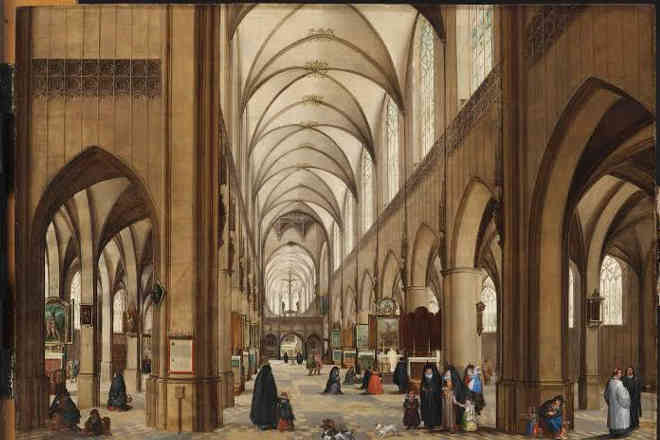Sponsored Listings:
Museum Mayer van den Bergh in Antwerp, Belgium, has opened the doors to the 17th century, with a unique exhibition of architectural paintings leading visitors into the interiors of churches from the 17th century. Together with an accompanying app for a self-guided tour of the city, the exhibition offers a journey to explore Antwerp as it was in the age of Rubens.
Under the direction of its curator Dr Claire Baisier, Museum Mayer van den Bergh has gathered 40 paintings and around a dozen drawings and prints for the exhibition. Some of the works on display are from national and international public collections, including the Kunsthistorisches Museum (Vienna), the Fondation Custodia (Paris), the Fitzwilliam Museum (Cambridge), the Szépművészetimuseum (Budapest) and the Rijksmuseum (Amsterdam). Interiors also feature pieces from various private collections that have never been exhibited before.
Unlike the interior paintings of the better-known Dutch School, works by the masters of the Antwerp School – such as Vredeman De Vries and Van Steenwijck, as well as father and son Neeffs and Abel Grimmer – never have been shown before.
Two interior views of Antwerp Cathedral by Hendrik I van Steenwijck are among the exhibition’s top pieces. The earliest piece dates from the late 16th century and was recently rediscovered. A second and later version of this work from 1593 (Szépművészetimuseum Budapest) incorporates figures by Jan I Breughel. Both perspectives show the cathedral immediately after Calvinist rule, when the church was in the midst of a restoration. These and other works from the exhibition therefore offer a treasure trove of documentary information in addition to their aesthetic value. The same applies to Antwerp’s Church of Saint Charles Borromeus in the period following the great fire of 1718. The bulk of this baroque church’s wealth and opulence was lost in the fire, including its ceiling murals by Rubens. Works by Sebastiaan Vrancx and Wilhelm Schubert von Ehrenberg give the viewer an idea of the riches that this church housed, prior to the disastrous fire.
Not all the masters whose Antwerp church interiors are shown in this collection were actually from Antwerp. Several essential pieces on display were the creations of Willem Von Ehrenberg and Anton Gunther Ghering, both German immigrants. Their baroque perspectives depict the 17th-century interiors of several Antwerp churches, including the Church of Saint Charles Borromeus and the Saint Walburga’s Church.
New work by graindelavoix for Divine Interiors exhibition
Music ensemble graindelavoix is recording a new album for the exhibition, featuring vocal music. This includes Orazio Vecchi, Duarte Lobo, Pedro Rimonte, Georges de la Hèle, Alard du Gaucquier, Matthias Pottier, Paulo Bravusi and Guillelmus Messaus. The music was released in the 16th century by fabled Antwerp printers Plantin and Phalesius, though the pieces have never been recorded or performed. The new work by graindelavoix can be heard for the first time at the exhibition, where it will play an essential role in visitors’ museum experience.
Tour 17th-century Antwerp with an app
A specially designed app guides visitors on a tour that includes the Cathedral of Our Lady, the Church of Saint Charles Borromeus, Saint Paul’s Church and Saint James’ Church. The churches, as they exist today, are put in virtual perspective with their 17th-century images. The visitor stands where the architectural painter once did and compares the modern appearance with the view that the master painted in the same spot 400 years ago. Inventive 3D reconstructions transport visitors back to the 17th century. The tour also takes in sites where churches once stood, but have since vanished from the cityscape.
These virtual reconstructions enable the visitor to become a time traveller, transported back to the age of Rubens. This journey through time reveals some interesting facts, such as that Rubens originally painted The Elevation of the Cross, which now adorns the Cathedral, for the vanished Saint Walburga Church, which stood inside the castle walls.
The app for the tour can be downloaded for free on smartphones with the Android operating system.
Source: financialexpress.com










